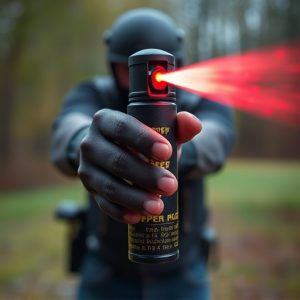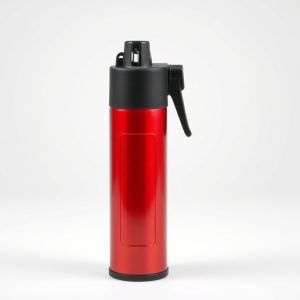Pepper Spray Mastery: Safety, Effectiveness, and Legal Guide for Beginners
Capsaicin, the active ingredient in chili peppers, is a powerful non-lethal tool in pepper spray for…….
Capsaicin, the active ingredient in chili peppers, is a powerful non-lethal tool in pepper spray for personal defense. For beginners, understanding capsaicin's properties and learning proper application techniques through specialized training (Pepper Spray Training for Beginners) is crucial for effective and safe use in high-risk situations. This includes learning about spray range, wind conditions, proper deployment, legal considerations, and side effects to ensure responsible usage.
“Unveiling a powerful personal protection tool, this article explores capsaicin-based pepper spray as a means of self-defense. Discover how this natural compound, renowned for its heat sensation, delivers an effective non-lethal force in the hands of civilians. From understanding its mechanism to choosing the right spray and learning essential training techniques, we guide beginners through the process. Additionally, we shed light on legal considerations, ensuring safe carrying practices. Get ready to empower yourself with knowledge, especially when it comes to Pepper Spray Training for Beginners.”
- Understanding Capsaicin and Its Effectiveness in Pepper Spray
- Choosing the Right Pepper Spray for Personal Protection
- Pepper Spray Training Techniques for Beginners
- Legal Considerations and Safety Precautions When Carrying Pepper Spray
Understanding Capsaicin and Its Effectiveness in Pepper Spray
Capsaicin, the active ingredient in chili peppers, has emerged as a powerful tool in personal protection devices, particularly in pepper spray. Its effectiveness lies in its ability to disrupt the nervous system, temporarily incapacitating an attacker. When exposed to capsaicin, the eyes water, breathing becomes difficult, and muscles can become weak, providing an individual with crucial time to escape or defend themselves.
For beginners considering pepper spray as a self-defense mechanism, understanding capsaicin’s properties is essential. Pepper spray training should encompass learning how to properly use this potent compound. With correct application techniques, pepper spray can be a game-changer in high-risk situations, offering an effective non-lethal response option.
Choosing the Right Pepper Spray for Personal Protection
When considering a pepper spray for personal protection, it’s crucial to understand your needs and choose accordingly. For beginners, starting with a basic, non-lethal self-defense pepper spray is recommended. These sprays typically contain a concentration of 1% capsaicin, which is enough to temporarily incapacitate an attacker without causing serious harm. They are easy to use and require minimal training, making them ideal for those new to personal protection.
Pepper spray training for beginners should focus on understanding the spray’s range, wind conditions, and proper application techniques. Knowing how to deploy the spray effectively in various scenarios is paramount. Regular practice sessions can help ensure that when a real emergency arises, you’ll be able to use your pepper spray confidently and precisely. Always check local laws regarding pepper spray ownership and usage to ensure compliance.
Pepper Spray Training Techniques for Beginners
For beginners looking to learn about pepper spray as a personal protection device, proper training is essential. Start by familiarizing yourself with the spray’s mechanism and safe handling practices. Learn the correct distance to hold the canister from your target, how to aim accurately, and understand the effects of capsaicin on the body. Practice aiming at various targets—static and moving—in open spaces to get a feel for the spray’s range and impact.
During training, focus on breathing techniques as pepper spray can cause intense respiratory irritation. Trainers should demonstrate how to breathe deeply and steadily during deployment to minimize inhalation of the irritant. Additionally, learn safe decontamination methods after use, including washing affected areas and changing clothes. Regular practice sessions will help beginners gain confidence in their ability to use pepper spray effectively and responsibly when faced with a dangerous situation.
Legal Considerations and Safety Precautions When Carrying Pepper Spray
When carrying a pepper spray device, it’s crucial to understand and comply with local laws and regulations. The legal status of pepper spray varies across regions, so beginners should conduct thorough research to ensure they are operating within the law. Many areas require registration or licensing for certain types and quantities of pepper spray, while others have restrictions on who can possess and carry it.
Safety precautions are paramount when handling and using pepper spray. Users must undergo appropriate Pepper Spray Training for Beginners to learn correct application techniques and understand the potential risks and side effects. This includes being aware of wind conditions that could direct the spray towards bystanders, as well as proper storage and disposal methods to prevent accidental activation or contamination. Regular maintenance and knowledge of the device’s expiration date are also essential safety measures.
In light of the above discussions, it’s clear that pepper spray, leveraging capsaicin as its active ingredient, can be a powerful tool for personal protection. Choosing the right spray and understanding its effectiveness is crucial. For beginners, proper training techniques and adherence to legal considerations ensure safe and responsible use. By mastering Pepper Spray Training for Beginners, individuals can defend themselves with confidence while navigating potential threats in today’s world.


